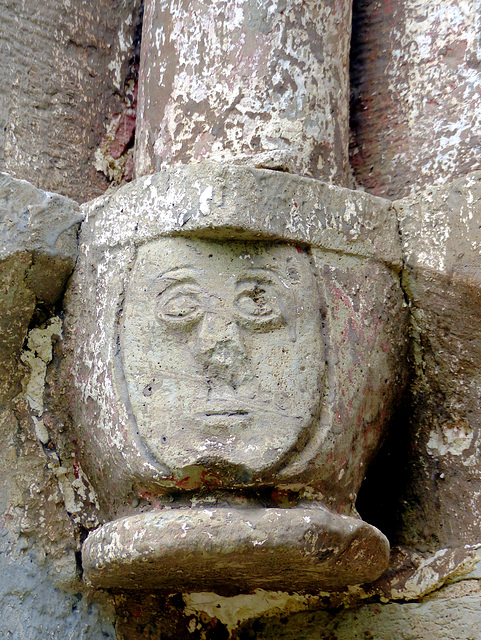Valjala - Martini kirik
Valjala - Martini kirik
Valjala - Martini kirik
Valjala - Martini kirik
Valjala - Martini kirik
Valjala - Martini kirik
Valjala - Martini kirik
Püha - Jakobi kirik
Püha - Jakobi kirik
Karja - Katariina kirik
Karja - Katariina kirik
Karja - Katariina kirik
Wysocice - Kościół św. Mikołaja
Wysocice - Kościół św. Mikołaja
Wysocice - Kościół św. Mikołaja
Wysocice - Kościół św. Mikołaja
Wysocice - Kościół św. Mikołaja
Mosteiro de Leça do Balio
Mosteiro de Leça do Balio
Mosteiro de Leça do Balio
Mosteiro de Leça do Balio
Mosteiro de Leça do Balio
Mosteiro de Leça do Balio
Mosteiro de Leça do Balio
Mosteiro de Leça do Balio
Candes-Saint-Martin - Collégiale Saint-Martin
Valjala - Martini kirik
Valjala - Martini kirik
Lębork - Kościół św. Jakuba
Oeversee - St. Georg
Oeversee - St. Georg
Champagnac-le-Vieux - Saint-Pierre
Champagnac-le-Vieux - Saint-Pierre
Champagnac-le-Vieux - Saint-Pierre
Hunawihr - St. Jaques le Majeur
Hunawihr - St. Jaques le Majeur
Chaniers - Saint-Pierre
Chaniers - Saint-Pierre
Chaniers - Saint-Pierre
Migron – Saint-Nazaire
Brie-sous-Matha – Saint-Pierre
Brie-sous-Matha – Saint-Pierre
Pérignac - Saint-Pierre
Pérignac - Saint-Pierre
Vieux-Mareuil - Saint-Pierre-ès-Liens
Vieux-Mareuil - Saint-Pierre-ès-Liens
Vieux-Mareuil - Saint-Pierre-ès-Liens
Tiffen - St. Jakobus
Tiffen - St. Jakobus
Tiffen - St. Jakobus
Tiffen - St. Jakobus
Deutsch-Griffen - St. Jakobus
Deutsch-Griffen - St. Jakobus
Deutsch-Griffen - St. Jakobus
Deutsch-Griffen - St. Jakobus
Deutsch-Griffen - St. Jakobus
Deutsch-Griffen - St. Jakobus
Deutsch-Griffen - St. Jakobus
Flattnitz - Hl. Johannes der Täufer
Flattnitz - Hl. Johannes der Täufer
Glödnitz - Hl. Margaretha
Glödnitz - Hl. Margaretha
Saint-Gervais - Saint-Gervais
Saint-Laurent-d'Arce - Saint-Laurent
Clermont-l'Hérault - Collégiale Saint-Paul
Clermont-l'Hérault - Collégiale Saint-Paul
Muttenz - St. Arbogast
Muttenz - St. Arbogast
Muttenz - St. Arbogast
Muttenz - St. Arbogast
Montcornet - Saint-Martin
Montcornet - Saint-Martin
Rozoy-sur-Serre - Saint-Laurent
Rozoy-sur-Serre - Saint-Laurent
Rozoy-sur-Serre - Saint-Laurent
Rozoy-sur-Serre - Saint-Laurent
Parfondeval - Saint-Médard
Parfondeval - Saint-Médard
Parfondeval - Saint-Médard
Parfondeval - Saint-Médard
Dohis - Nativité-de-la-Sainte-Vierge
Cuiry-lès-Iviers - Saint-Martin
Jeantes - Saint-Martin
Jeantes - Saint-Martin
Jeantes - Saint-Martin
Jeantes - Saint-Martin
Bancigny - Saint-Nicolas
Renneval - Notre Dame
Location
Lat, Lng:
Lat, Lng:
You can copy the above to your favourite mapping app.
Address: unknown
Lat, Lng:
You can copy the above to your favourite mapping app.
Address: unknown
See also...
Keywords
Authorizations, license
-
Visible by: Everyone -
All rights reserved
-
105 visits
Valjala - Martini kirik


The Northern Crusades brought Christianity to the island and construction of the church started following the Livonian Crusade, in 1227. The first church was a smaller chapel built near the site of the Valjala Stronghold. The chapel was later extended and still forms the nucleus of the current church. Remnants from this earliest period of the building include Romanesque fragments of murals. In 1240, the church was expanded and it got its present form of a single-nave church.
In 1343 the church was damaged during the St. George's Night Uprising. Restoration works and other additions to the church henceforth were more clearly Gothic in form. The church was now built to be able to function as a refuge in times of trouble, as well as a church. There are rooms above the vaults that are constructed so that they could only be reached using a ladder that could be pulled up.
The tower dates from the 17th century. Some remains of older, trapezoidal grave slabs are carved into the walls of the tower. The baroque spire was built in the 1770s, but was destroyed after a lightning strike in 1922 and replaced by a new one four years later.
In 1343 the church was damaged during the St. George's Night Uprising. Restoration works and other additions to the church henceforth were more clearly Gothic in form. The church was now built to be able to function as a refuge in times of trouble, as well as a church. There are rooms above the vaults that are constructed so that they could only be reached using a ladder that could be pulled up.
The tower dates from the 17th century. Some remains of older, trapezoidal grave slabs are carved into the walls of the tower. The baroque spire was built in the 1770s, but was destroyed after a lightning strike in 1922 and replaced by a new one four years later.
Annemarie, Andy Rodker, Paolo Tanino, Marco F. Delminho have particularly liked this photo
- Keyboard shortcuts:
Jump to top
RSS feed- Latest comments - Subscribe to the comment feeds of this photo
- ipernity © 2007-2024
- Help & Contact
|
Club news
|
About ipernity
|
History |
ipernity Club & Prices |
Guide of good conduct
Donate | Group guidelines | Privacy policy | Terms of use | Statutes | In memoria -
Facebook
Twitter

Sign-in to write a comment.